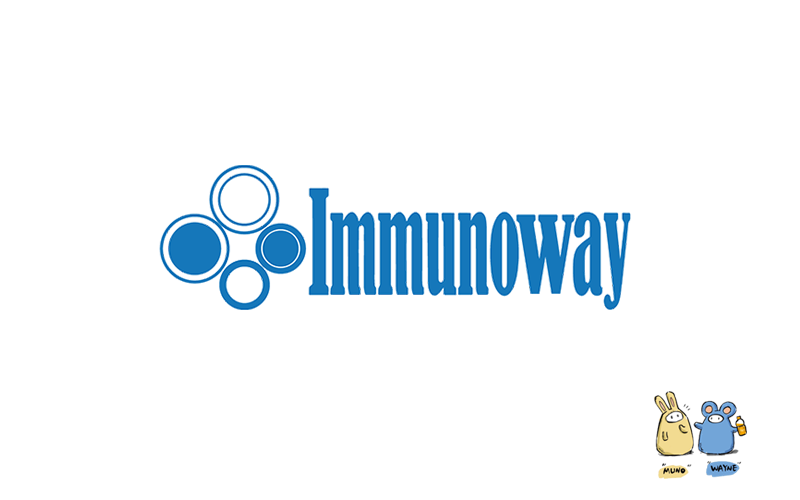
Catalog: KA3952C
Size
Price
Status
Qty.
96well
$330.00
In stock
0
Add to cart


Collected


Collect
Main Information
Reactivity
Human
Applications
ELISA
Conjugate/Modification
Unmodified
Detailed Information
Storage
2-8°C/6 months
Modification
Unmodified
Detection Method
Colorimetric
Related Products
Antigen&Target Information
Gene Name:
COL4A3
show all
Other Name:
Collagen alpha-3 ;
IV ;
chain ;
Goodpasture antigen ;
[Cleaved into: Tumstatin]
IV ;
chain ;
Goodpasture antigen ;
[Cleaved into: Tumstatin]
show all
Background:
alternative products:The majority of isoforms differ in the C-terminal part of the NC1 domain,disease:Autoantibodies against the NC1 domain of alpha 3(IV) are found in Goodpasture syndrome, an autoimmune disease of lung and kidney.,disease:Defects in COL4A3 are a cause of Alport syndrome autosomal recessive (APSAR) [MIM:203780]. APSAR is characterized by progressive glomerulonephritis, glomerular basement membrane defects, renal failure, sensorineural deafness and specific eye abnormalities (lenticonous and macular flecks). The disorder shows considerable heterogeneity in that families differ in the age of end-stage renal disease and the occurrence of deafness.,disease:Defects in COL4A3 are a cause of benign familial hematuria (BFH) [MIM:141200]; also known as thin basement membrane nephropathy. BFH is characterized by persistent hematuria, an electron microscopically detectable thin glomerular basement membrane (GBM) and an autosomal dominant mode of inheritance. Renal function remains normal. In children, differentiation between BFH and AS can be difficult, because both disorders are manifested by persistent hematuria and thin GBM at that age.,domain:Alpha chains of type IV collagen have a non-collagenous domain (NC1) at their C-terminus, frequent interruptions of the G-X-Y repeats in the long central triple-helical domain (which may cause flexibility in the triple helix), and a short N-terminal triple-helical 7S domain.,function:Tumstatin, a cleavage fragment corresponding to the collagen alpha 3(IV) NC1 domain, possesses both anti-angiogenic and anti-tumor cell activity; these two anti-tumor properties may be regulated via RGD-independent ITGB3-mediated mechanisms.,function:Type IV collagen is the major structural component of glomerular basement membranes (GBM), forming a 'chicken-wire' meshwork together with laminins, proteoglycans and entactin/nidogen.,miscellaneous:The epitopes recognized by the Goodpasture autoantibodies are sequestered within the NC1 hexamer of the type IV collagen network.,PTM:Isoform 2 contains an additional N-linked glycosylation site.,PTM:Phosphorylated by the Goodpasture antigen-binding protein/COL4A3BP.,PTM:Prolines at the third position of the tripeptide repeating unit (G-X-Y) are hydroxylated in some or all of the chains.,PTM:Type IV collagens contain numerous cysteine residues which are involved in inter- and intramolecular disulfide bonding. 12 of these, located in the NC1 domain, are conserved in all known type IV collagens.,similarity:Belongs to the type IV collagen family.,similarity:Contains 1 collagen IV NC1 (C-terminal non-collagenous) domain.,subcellular location:Colocalizes with COL4A4 and COL4A5 in GBM, tubular basement membrane (TBM) and synaptic basal lamina (BL).,subunit:There are six type IV collagen isoforms, alpha 1(IV)-alpha 6(IV), each of which can form a triple helix structure with 2 other chains to generate type IV collagen network. The alpha 3(IV) chain forms a triple helical protomer with alpha 4(IV) and alpha 5(IV); this triple helical structure dimerizes through NC1-NC1 domain interactions such that the alpha 3(IV), alpha 4(IV) and alpha 5(IV) chains of one protomer connect with the alpha 5(IV), alpha 4(IV) and alpha 3(IV) chains of the opposite promoter, respectively. Interacts with COL4A3BP AND ITGB3. Associates with LAMB2 at the neuromuscular junction and in GBM.,tissue specificity:Alpha 3 and alpha 4 type IV collagens are colocalized and present only in basement membranes of kidney, eye, cochlea, lung and brain.,
show all
Function:
circulatory system process, apoptosis, induction of apoptosis, activation of caspase activity, cell adhesion, cell surface receptor linked signal transduction, sensory perception, sensory perception of sound, blood circulation, cell death, cell proliferation, negative regulation of cell proliferation, response to carbohydrate stimulus, response to hexose stimulus, response to glucose stimulus, response to organic substance, regulation of cell death, positive regulation of cell death, positive regulation of peptidase activity, programmed cell death, induction of programmed cell death,death, negative regulation of angiogenesis, biological adhesion, response to monosaccharide stimulus, regulation of cell proliferation, regulation of apoptosis, positive regulation of apoptosis, regulation of programmed cell death,positive regulation of programmed cell death, positive regulation of catalytic activity, positive regulation of caspase activity, regulation of caspase activity, positive regulation of molecular function, regulation of angiogenesis,neurological system process, cognition, sensory perception of mechanical stimulus, regulation of hydrolase activity,positive regulation of hydrolase activity, regulation of peptidase activity, regulation of endopeptidase activity,
show all
Cellular Localization:
Secreted, extracellular space, extracellular matrix, basement membrane. Colocalizes with COL4A4 and COL4A5 in GBM, tubular basement membrane (TBM) and synaptic basal lamina (BL). .
show all
Tissue Expression:
Alpha 3 and alpha 4 type IV collagens are colocalized and present in kidney, eye, basement membranes of lens capsule, cochlea, lung, skeletal muscle, aorta, synaptic fibers, fetal kidney and fetal lung. PubMed:8083201 reports similar levels of expression of alpha 3 and alpha 4 type IV collagens in kidney, but PubMed:7523402 reports that in kidney levels of alpha 3 type IV collagen are significantly lower than those of alpha 4 type IV collagen. According to PubMed:8083201, alpha 3 type IV collagen is not detected in heart, brain, placenta, liver, pancreas, extrasynaptic muscle fibers, endoneurial and perineurial nerves, fetal brain, fetal heart and fetal liver. According to PubMed:7523402, alpha 3 type IV collagen is strongly expressed in pancreas, neuroretina and calvaria and not expressed in adrenal, ileum and skin. Isoform 1 and isoform 3 are strongly expressed in kidney, lung, suprarenal capsule, muscle and spleen, in each of these tissues isoform 1 is more abundant than isoform 3. Isoform 1 and isoform 3 are expressed at low levels in artery, fat, pericardium and peripherical nerve, but not in placenta, mesangium, skin, pleura and cultured umbilical endothelial cells.
show all
Signaling Pathway
Cellular Processes >> Cellular community - eukaryotes >> Focal adhesion
Organismal Systems >> Endocrine system >> Relaxin signaling pathway
Human Diseases >> Cancer: overview >> Pathways in cancer
Human Diseases >> Cancer: specific types >> Small cell lung cancer
Environmental Information Processing >> Signal transduction >> PI3K-Akt signaling pathway
Environmental Information Processing >> Signaling molecules and interaction >> ECM-receptor interaction
Reference Citation({{totalcount}})
Catalog: KA3952C
Size
Price
Status
Qty.
96well
$330.00
In stock
0
Add to cart


Collected


Collect
Recently Viewed Products
Clear allPRODUCTS
CUSTOMIZED
ABOUT US
Toggle night Mode
{{pinfoXq.title || ''}}
Catalog: {{pinfoXq.catalog || ''}}
Filter:
All
{{item.name}}
{{pinfo.title}}
-{{pinfo.catalog}}
Main Information
Target
{{pinfo.target}}
Reactivity
{{pinfo.react}}
Applications
{{pinfo.applicat}}
Conjugate/Modification
{{pinfo.coupling}}/{{pinfo.modific}}
MW (kDa)
{{pinfo.mwcalc}}
Host Species
{{pinfo.hostspec}}
Isotype
{{pinfo.isotype}}
Product {{index}}/{{pcount}}
Prev
Next
{{pvTitle}}
Scroll wheel zooms the picture
{{pvDescr}}



















